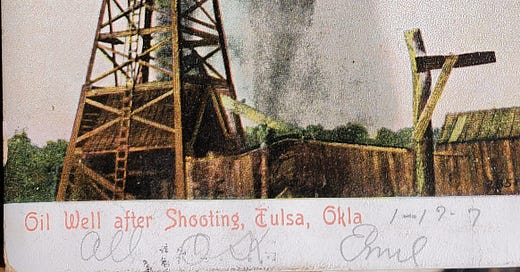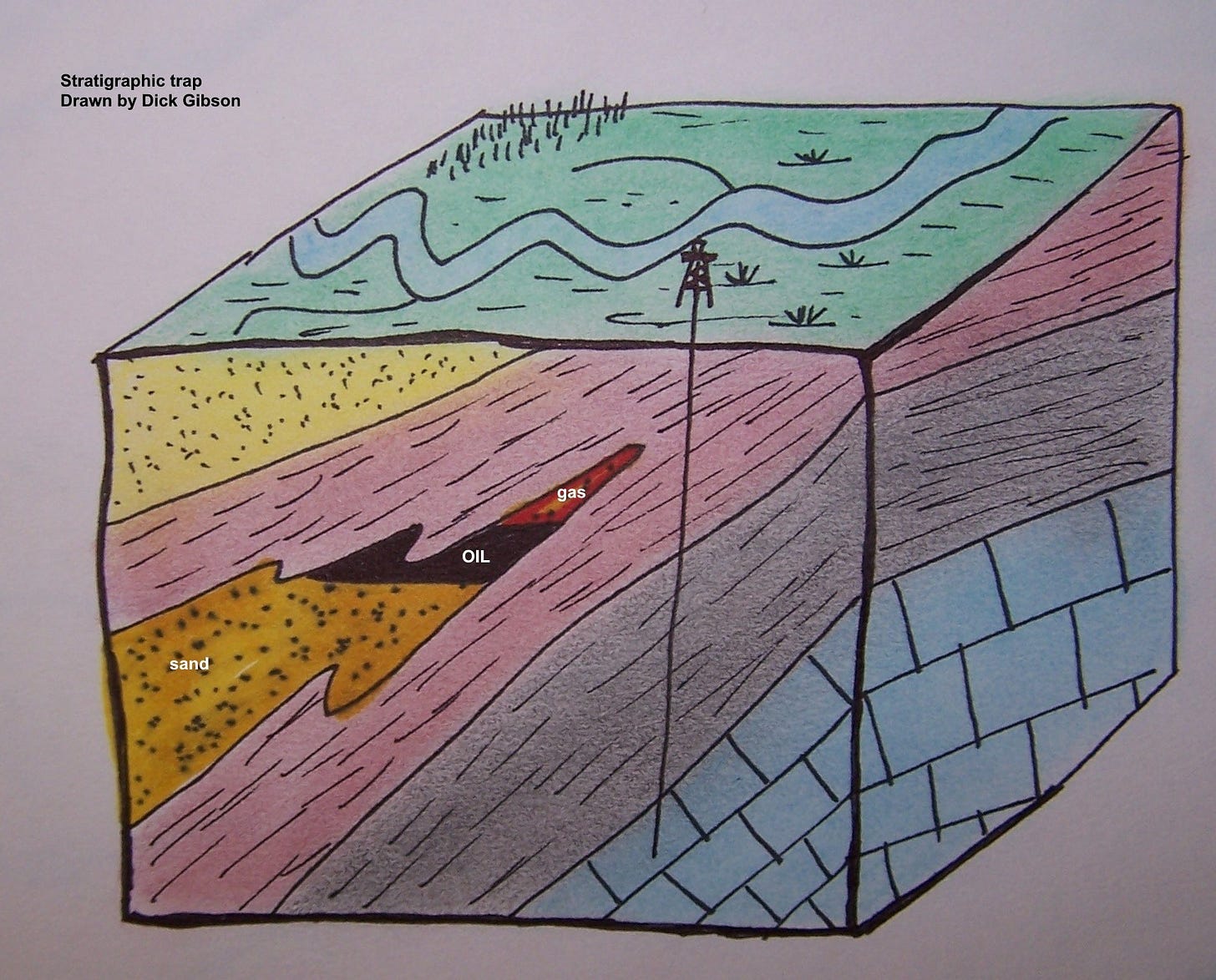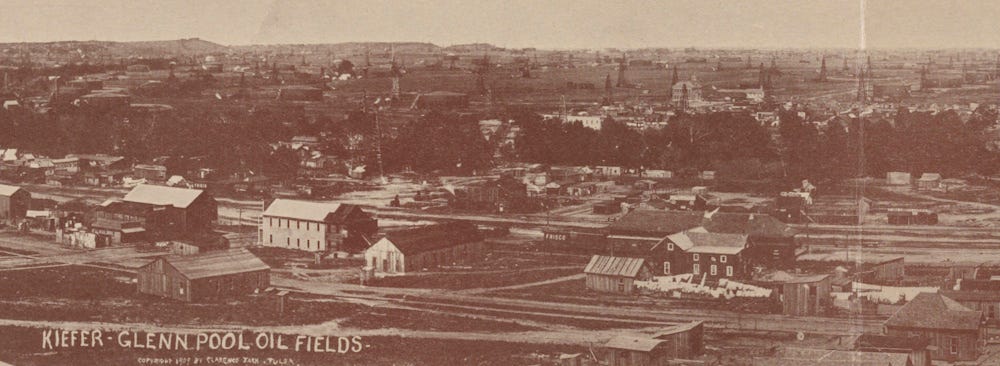Life in the USA is not normal. It feels pointless and trivial to be talking about small looks at the fascinating natural world when the country is being dismantled. But these posts will continue, as a statement of resistance. I hope you continue to enjoy and learn from them. Stand Up For Science!
The first big oil discovery in what is now Oklahoma, on November 22, 1905, was near an insignificant railroad and river town called Tulsa. Not only did the Glenn Pool put Tulsa on the map, but it also literally made Oklahoma the “Oil Capital of the World.”
Within two years the Glenn Pool was producing more than 55,000 barrels a day, at a time when the entire rest of the United States was producing about 100,000 barrels a day. At times the output from Glenn reached 120,000 barrels a day, and today its total cumulative production is more than 340,000,000 barrels. Glenn Pool was the largest oil field in the world for many years, and by some estimates generated more wealth than the California Gold Rush and the Nevada Silver Boom combined.
The oil is trapped in sand reservoirs in the Pennsylvanian age (the Desmoinesian or Moscovian stage, about 310 million years ago) Bartlesville Sand. The sand was deposited in deltas from rivers flowing north off the then recently uplifted Ouachita mountain system, part of the grander Appalachian Orogeny. Deltaic sediments tend to occupy wedge-shaped bodies of sand and other materials, thickening oceanward and thinning back toward the erosional source of the sediments in the uplands. Glenn Pool is in a huge pinch-out of such sands, similar to the cartoon below.
Glenn Pool covers about 12 square miles and was named for Ida Glenn, the Native American Creek tribe member on whose land it was discovered. There was nowhere for such huge volumes of oil to go, so major companies like Gulf and Texaco built pipelines to their refineries on the Gulf Coast, investments that contributed significantly to their corporate enrichment. Ida Glenn’s family also became rich from the royalties they received.
By 1909 the oil field covered a vast area, with derricks and pump-jacks all over the landscape.
This post card photo at the top shows a well in the Glenn Pool “after shooting.” Shooting was a method of enhancing production by lowering an explosive charge (dynamite in the 1900s-1910s) into the well bore and blasting it. Oil producers do the same thing today, albeit in a more controlled manner. “Perforating” is done by lowering shaped charges to the specific part of the well that needs to be blasted, and intensity and direction are controlled. The waste that results from a gusher like the one in the photo would be bad news today, not to mention the environmental liability and incredibly bad public relations it would create.
Although the post card photo at top refers to “Tulsa, Okla.,” the postmark on the back on January 17, 1907, is from “Tulsa, Ind. T.” Eastern Oklahoma was still Indian Territory until statehood on November 16, 1907. There can be no doubt that Oklahoma’s oil figured significantly in its fast track to statehood, and the combination of Oklahoma Territory and Indian Territory to form the state.
This post card is a chromolithograph produced in Germany.







My second thought after seeing that postcard of a "classic" gusher was ' the ground around it sure must have a nasty mess after that.
Are you familiar with Crawford and Lawrence Counties in Illinois? They hit oil going back "a hunnerd years" people said, when I first moved there in the late 80s. Both counties had refineries at one time. I called that area 'little kuwait'. Pumps scattered everywhere.
Was it a similar geological configuration? If you don't know, no worries....
I love minerals, but the geology I don't go deep into.